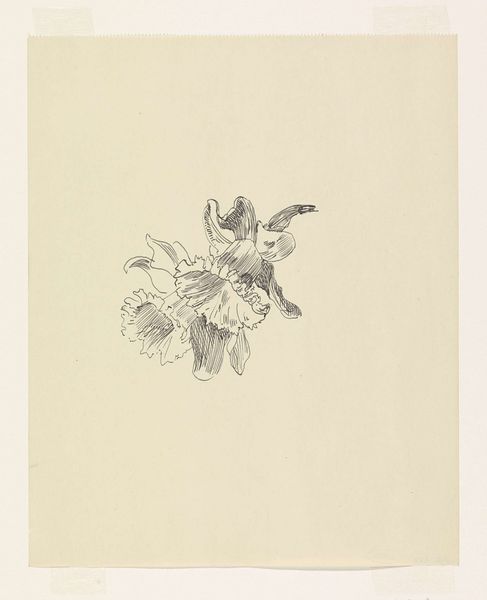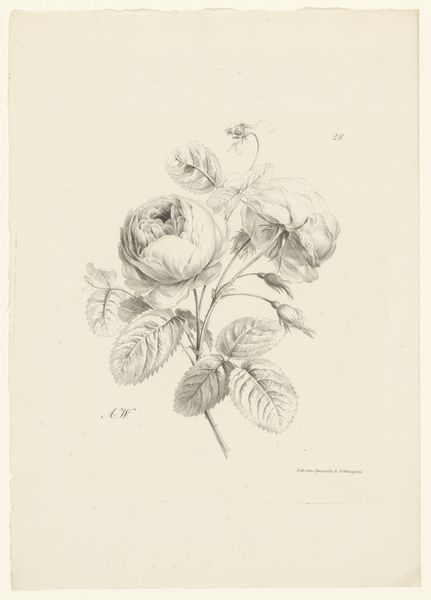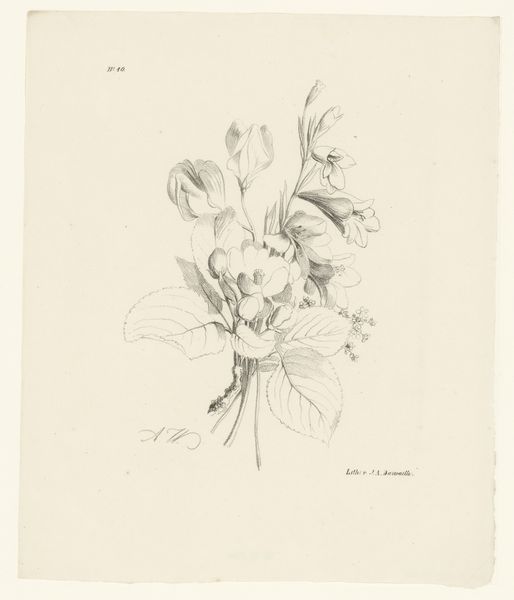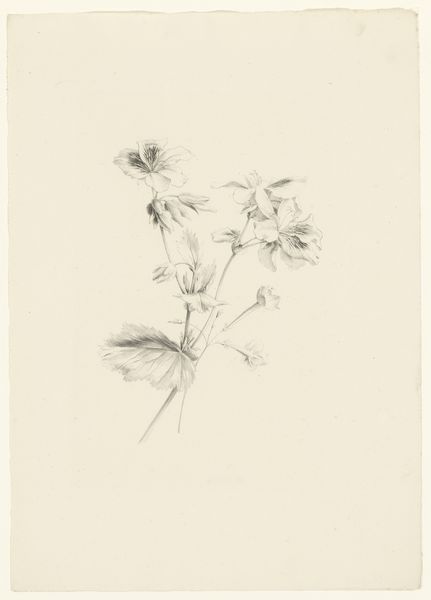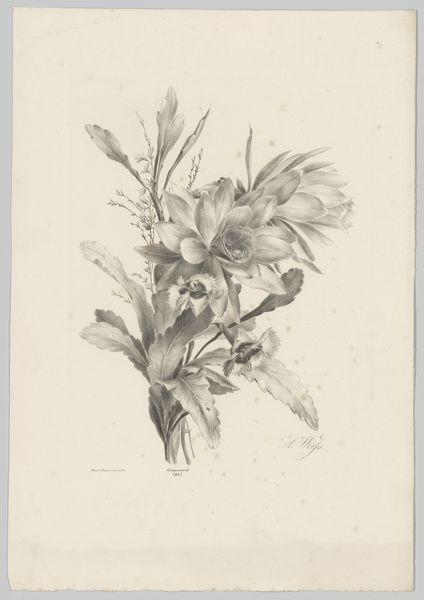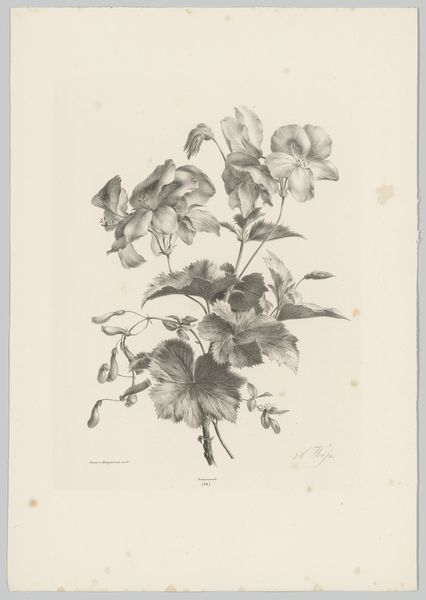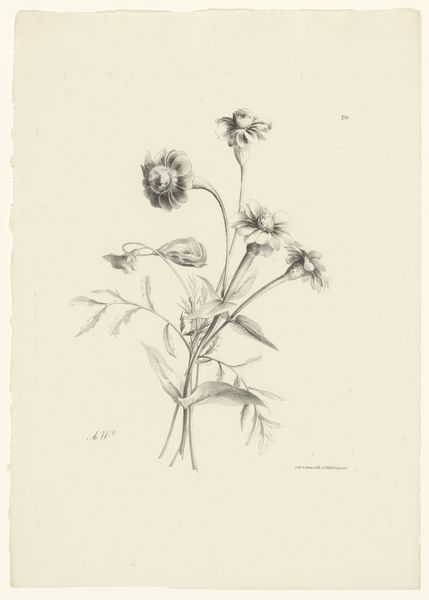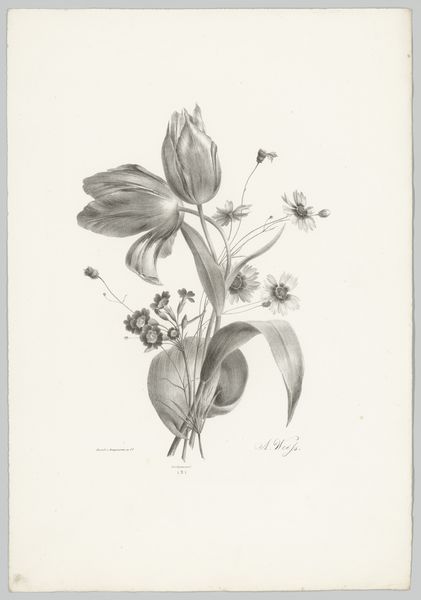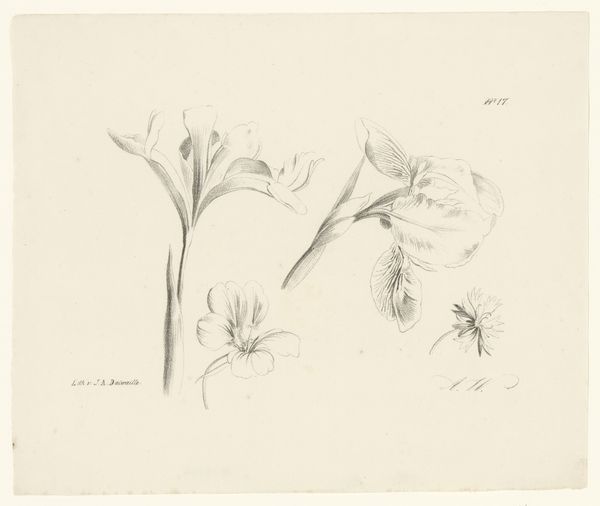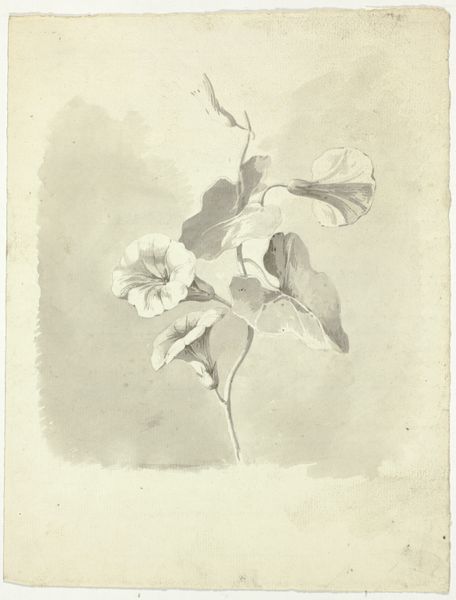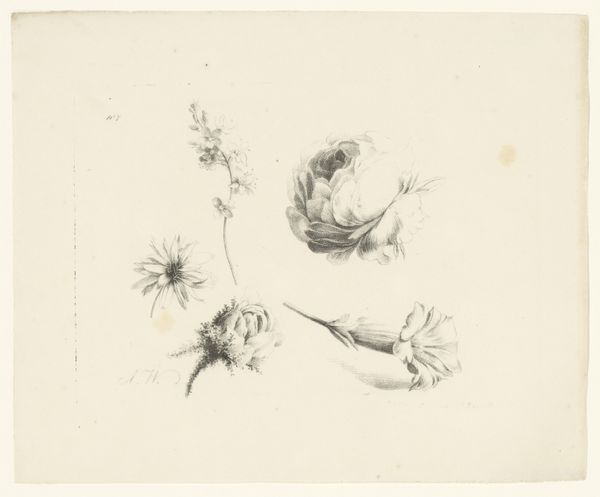
drawing, pencil
#
drawing
#
old engraving style
#
flower
#
pencil
#
botanical drawing
#
line
#
watercolour illustration
#
botanical art
#
realism
Dimensions: height 344 mm, width 245 mm
Copyright: Rijks Museum: Open Domain
Editor: Here we have "Amaryllissen," a pencil drawing dating from 1831-1832, by Anton Weiss. It's striking how much detail he gets with just a pencil. The shading almost makes it look three-dimensional. What stands out to you in this piece? Curator: Immediately, the linear precision captivates. Notice the meticulously rendered outlines defining each petal, creating a compelling interplay of light and shadow. The stippling effect gives a palpable sense of texture. What do you observe about the composition? Editor: I notice how the flowers are clustered together. They almost feel like they're spilling out of the frame. Is that a deliberate choice? Curator: Precisely! The close cropping focuses our attention on the forms themselves. There is minimal background detail, redirecting our gaze to the delicate gradations of tone achieved through varied pencil pressure. We may see realism, but it’s carefully constructed, would you not agree? Editor: Yes, I see what you mean. It’s realism, but controlled. Almost heightened by the artist’s careful rendering of form. Curator: The interplay between light and shadow creates an almost sculptural quality. Consider, for example, the treatment of the petals – they aren’t just surfaces, but volumes defined by light. Editor: That’s a great way to put it. I had been focusing on the detail but hadn’t really considered it in terms of light and volume. Curator: Reflect on how even a seemingly simple subject like a flower drawing can offer complex relationships when we investigate its intrinsic qualities of line, composition, and tone. Editor: I definitely see that now. Thank you.
Comments
No comments
Be the first to comment and join the conversation on the ultimate creative platform.
